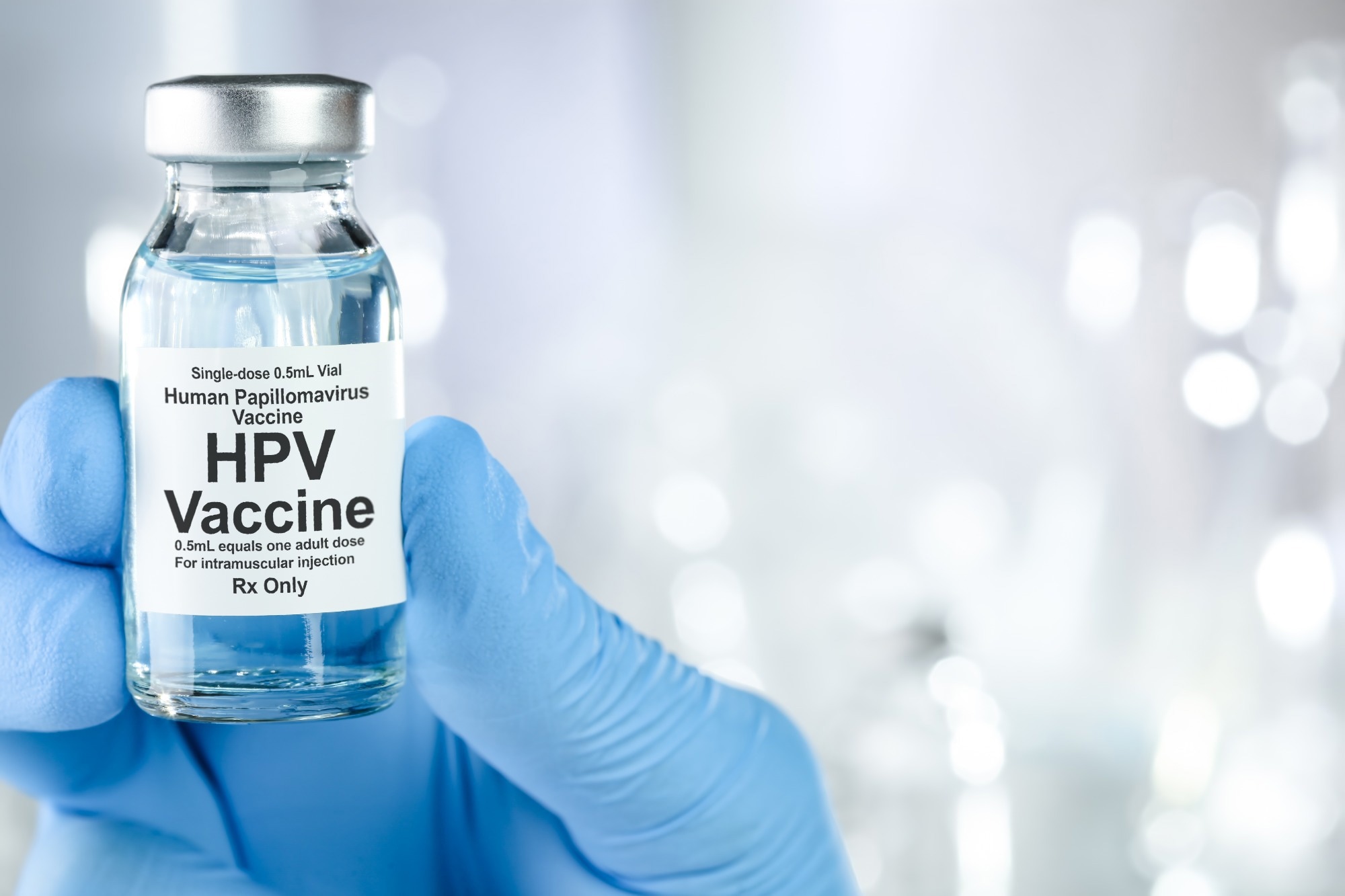In a recent article published in BMC Medicine, researchers commented on a recently published study by Prem et al. that explored the benefits of a single dose of human papillomavirus (HPV) vaccination versus its two-dose schedule.
 Study: The one-dose schedule opens the door to rapid scale-up of HPV vaccination. Image Credit: Leigh Prather/Shutterstock.com
Study: The one-dose schedule opens the door to rapid scale-up of HPV vaccination. Image Credit: Leigh Prather/Shutterstock.com
Background
In 2020, the World Health Organization (WHO) designated cervical cancer as a global public health concern. Consequently, the vaccination against HPV emerged as a pivotal measure to curb cervical cancer cases worldwide.
Unfortunately, the high costs of procuring and delivering HPV vaccines, compounded by logistical obstacles and supply constraints, gave rise to extensive disparities in vaccine distribution.
These disparities obstructed the expansion of HPV vaccination efforts by health authorities, resulting in sluggish uptake, particularly in low-income and low- to middle-income countries (LICs and LMICs), where cervical cancer exerts its most significant toll.
The situation further deteriorated with the advent of the COVID-19 pandemic. Consequently, as of 2021, HPV vaccine coverage for girls aged 9 to 14 plummeted to a mere 12%.
In their study, Prem and colleagues examined the potential equivalence in protection against HPV infection between a one-dose HPV vaccination regimen and its two-dose counterpart across 188 countries. Their primary focus was to assess the vaccine efficacy (VE) and the duration of protection associated with both vaccination schedules.
The findings of the study underscored the significant advantages of a one-dose HPV vaccination program, particularly in low- and middle-income countries (LMICs). Firstly, it had the potential to substantially reduce the costs of vaccination programs. Secondly, it simplified the implementation of vaccination programs. Lastly, it helped alleviate issues related to vaccine supply shortages.
In a broader perspective, implementing a one-dose HPV vaccination schedule has the potential to bridge the vaccination coverage gap between high-income countries (HICs) and low- and middle-income countries (LMICs). This represents a significant stride towards achieving the global goal of eradicating cervical cancer.
Regarding the cost-effectiveness of the 9-valent HPV vaccine, this study revealed that the cost threshold for the second dose was lower than the minimum pricing established by the United Nations Children's Fund Supply Division (UNICEF), which stands at US$ 4.50.
This suggests that the current minimum pricing of HPV vaccines needs further adjustment to ensure the cost-effectiveness of the two-dose HPV vaccination program in low-income countries (LICs).
Despite the initial investment required for a one-dose HPV vaccination program, reducing the unit cost of the vaccine could help LICs overcome fnancial barriers to initiate and sustain HPV vaccine initiatives.
Conclusions
The study data holds the potential to provide valuable insights for stakeholders engaged in the development of an optimal strategy for the expansion of HPV vaccination.
Nevertheless, it is imperative to emphasize the pivotal role of bolstering political commitment in this endeavor. Additionally, enhancing public awareness concerning HPV vaccines to surmount the barriers hindering vaccine uptake represents a promising avenue of action.
Furthermore, the realm of HPV vaccine research must continue to play an integral role in guiding decision-making processes, encompassing assessments of the impact of a one-dose vaccination schedule on a nation's healthcare budget.
Notwithstanding the cost-effectiveness inherent to HPV vaccination, the financial constraints arising from competing healthcare priorities in various countries may render affordability a pertinent concern.
Consequently, the progressive extension of HPV vaccination programs can only be realized when tailored to the distinctive requirements of individual nations.
As an ever-evolving body of data related to HPV vaccination emerges, researchers are presented with the opportunity to explore potential variances in the efficacy of both vaccination schedules, thus facilitating the gradual expansion of HPV vaccination initiatives while accommodating the healthcare budget constraints specific to each country.